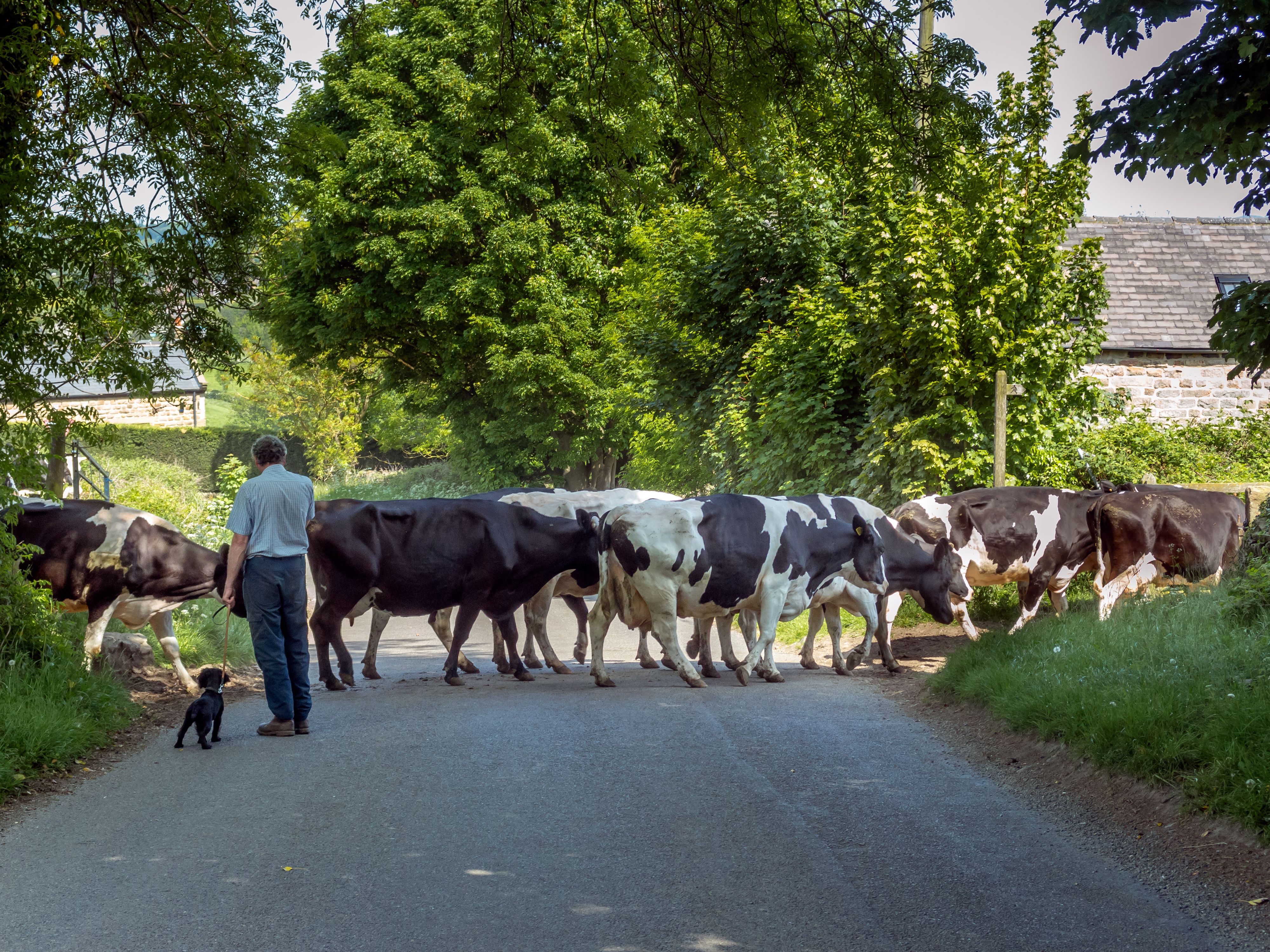Restructuring finance: Milking robots bring new success to family dairy

At UK Agricultural Finance, we strongly believe in supporting farmers to invest in their agricultural business with farm loans. Many established farm businesses that have been in the family for a long time will require some form of restructuring, and this may require restructuring finance.
UK Agricultural Finance were approached by a family dairy partnership that have been trading for over 115 years. In the case of this dairy farm, restructuring would not only provide improved business structure, but also bring in new productivity improvements and the use of innovative technology.
Why did the dairy farm require restructuring finance?
The family had decided to consolidate and restructure the business to allow them to run the operations more efficiently. At the time of the loan application, the partnership had bought out two partners of the business and had also recently sold a second farm as it had become unsustainable to manage both farms from a financial and physical perspective.
The sale had allowed the family to repay all secured borrowing with their existing lender, and they were now looking to re-invest and restructure their business, which was to be run from the one location. However, the sale of the second farm had also included the majority of their milking herd, so they would need to reinvest in livestock once the restructuring was complete.
The family’s goal for the restructuring process was to reduce labour on the dairy farm and improve productivity so that the farm business would be more financially sustainable and adaptive to changing market conditions. As part of this process, the borrowers wanted to invest in a new robot milking system that would improve the productivity of the farm while reducing the labour input.
The borrowers required a loan in order to finish adapting an existing cow shed to provide a suitable area for installing milking robots and to make the final changes necessary to accommodate the milking herd.
How did the borrowers prepare for the project?
The borrowers had the resources to start some of the work required themselves, and had made the decision to relocate the remaining herd to a family farm 30 miles away whilst the work was being carried out. They felt this would ensure the wellbeing of the livestock during the building phase and would allow them the time to complete some of the work, which they would otherwise not have time for had they still been milking and caring for the herd.
This decision on the face of it was very practical; however, it had a significant impact on their trading accounts. Having repaid all their previous borrowings, they were in the fortunate position of having an unencumbered asset – the main farm. But, as they were not generating any milk income and had taken income from the business to buy out other partners, their trading accounts were not positive enough to support a loan through mainstream lenders.
Mainstream lenders will often use a tick-box approach to loan applications, which means they were unable to consider the context of why the trading accounts may not be representative of the true value or income of the business.
Why was UK Agricultural Finance able to consider this restructuring finance when others wouldn’t?
UK Agricultural Finance do not rely solely on a tick-box approach for loan applications and so were able to look at the bigger picture with this application.
We could appreciate why the borrowers had implemented the changes prior to making their application and the impact that this would have on the business moving forward. We could also see the practical reasons behind their management decisions for the livestock during the project. When we spoke to the borrowers, it was obvious how much research and planning had gone into the introduction of the robots and the rewards that this would bring to the business.
The borrowers approached UK Agricultural Finance with a well-thought-out business plan that detailed costings for the necessary remaining work in order to bring the herd back to the farm and recommence milking via the robots as quickly as possible.
They were also able to provide realistic projections to show how and when the income would recommence as their plans were brought into force.
How was UK Agricultural Finance able to help with restructuring finance?
UK Agricultural Finance were able to offer the borrowers a bridge loan with 24 months’ interest roll up to give them the breathing space they needed to have their plans embedded before starting to repay the interest come the third year of their business plan.
When it came to deciding how long the borrowers would need the period of roll up interest, the projections provided by the farm were invaluable and clearly well researched. We were also able to take additional income into consideration as one of the family members was employed at the local school. As an agricultural loan provider, we are well versed in dealing which multiple income streams, which can be complex in long-established farm businesses.
The welfare of the animals was also clear from an early stage in the application, and continued to be the case as we spent time getting to know the borrowers on site visits to the farm. This showed us what passionate and knowledgeable dairy farmers they were, which further supported the quality of their application.
What about if the dairy farm required additional finance?
The borrowers had offered sufficient security for the initial loan to fit comfortably within our loan to value limits. This was of benefit to the borrower when they re-approached UK Agricultural Finance for further borrowing 12 months later.
The borrower explained that the cows had really struggled with the heat the previous summer, which lead to a significant drop in milk production. They were now looking to combat that issue by installing some fans into the cow shed. It was also an opportunity to consolidate some unsecured debt and requested a small additional loan.
UK Agricultural Finance were able to action their request for additional funds efficiently, and the borrowers have confirmed that they didn’t lose any milk over what turned out to be an extremely hot summer thanks to getting the money through quickly and the fans installed just in time!
With all their plans implemented and the breathing space provided via the roll-up interest period, allowing them to reinvest back into the business, the borrowers are on course to refinance the debt back to the high street before the end of their 3-year term.
How have we supported this borrower throughout their restructuring finance journey?
Our BDM, Louise, has visited this family partnership at different stages of the business plan being implemented and has seen how all the planning, research and hard work has paid off.
This is what the borrowers had to say about working with us:
“The team at UK Agricultural Finance have been fantastic. They are very supportive, especially Louise, who understands farming and is very enthusiastic and supportive. She is very easy to work with and questions are answered very quickly. It is great to know that she is always at the end of an email.”
The introduction of the robots alone has given them data they have never benefited from before, which has helped them to further improve the management of their animals and gives them insights to help catch any potential issues in the herd early on.
Contrary to what some may think, the installation of the robots have provided them with more time to spend with their animals, leading to more hands-on time checking cows and working with dry members of the herd. The installation has even re-ignited the interest of the younger members of the family, who are impressed with the technology and modern methods of managing the business made available via the robots.
The successful outcome has also led to a life-long dream of being able to introduce a Farm Education Centre on site. This enabled the family to run a series of sessions over the summer of 2022 for children aged between 8–14 years old, with activities covering scavenger hunts, orienteering, team building games, outdoor crafts and of course, hands-on farm activities.
They now look to progress this with curriculum-based lessons for schools throughout the North West, where they will be teaching how a modern dairy farm operates; from caring for newborns to showing them their state-of-the-art robotic milking systems so that children have more of an understanding of what goes into the production of a pint of the white stuff!

